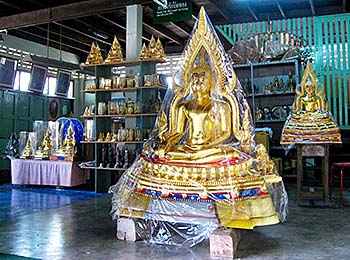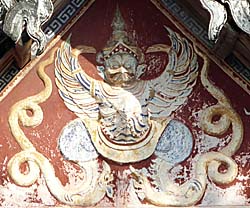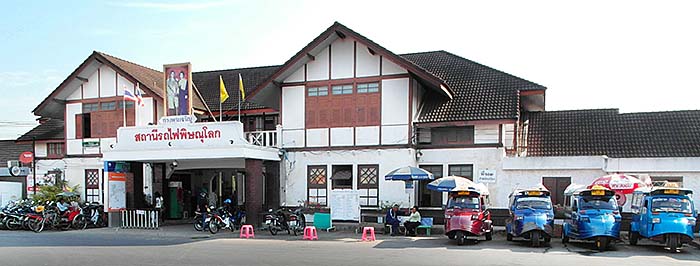1.
Phitsanulok / Philok
Phitsanulok (short: Philok) is a Thai city and provincial capital in the north of the central plains of Thailand. It's situated at the banks of the Nan River. Since the Nan River is blocked by the 'Naresuan Dam', it's not usable as a bigger shipping route and therefore is no bigger ship traffic on the waterway. The surroundings are mostly flat plains with rice paddies. But there are also a few mountainous places around; part of it is national park.
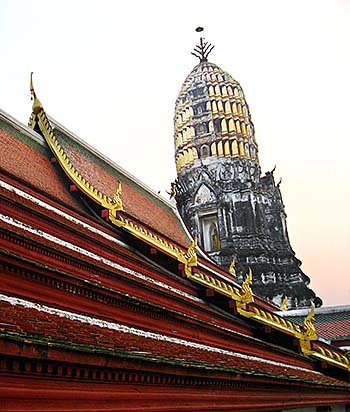
The photo shows the main prang of Wat Mahathat. Image by Asienreisender, 2/2007
The city of Phitsanulok is one of the places in Thailand who are historically significant. It was a bastion against invading Burmese armees and for a time Ayutthaya's second capital. It's nowadays also an industrial center and a traffic hub for the region. The crossing of national road 11 and 12 seven kilometers east of the city center is called the Indochina Crossing. Far distance roads to and fro Kunming/China, Danang/Vietnam, Kuala Lumpur/Malaysia and Ranong/Burma/Myanmar come together here. With about 73,000 inhabitants, Phitsanulok is one of the bigger places in the country. Although the number sounds low, the place is pretty big, an observation I made many times in Thailand.
The city was struck by a desastrous fire in 1957, which destroyed great parts of the place, including many of the historical buildings.
Phitsanulok is also a center for the Thai army in charge of the north of Thailand. The nasty, pretty aggressive Thai dog race Bangkaew origins in Phitsanulok Province.
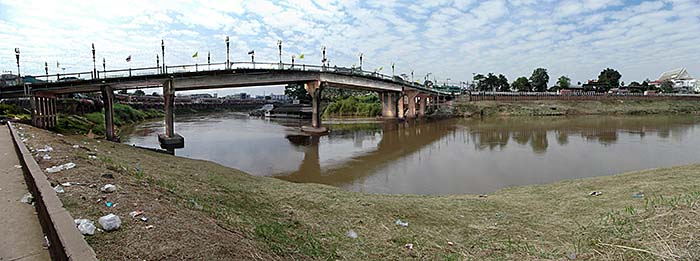
The Nan River at Phitsanulok with one of the main bridges. All the rubbish in the foreground and tons more of it was left by last night's New Years Party. Image by Asienreisender, 2013
Phitsanulok was, in the time before it came to the Sukothai empire, a northwestern outpost of the Angkorean empire, surrounded by a city wall. Few remains of it are still existing. It fell to the empire of Sukothai in the 14th century.
The city of Phitsanulok was in the 15th century for some decades the second capital of the kingdom of Ayutthaya. In the following time there was a military center here for training troops and war elephants for the Burmese wars.
The Siamese king Naresuan (reign: 1588-1605), who freed Ayutthaya in 1590 from Burmese vassalage, was born here. Naresuan is legendary for an elephant fight and combat against a Burmese prince.
Remarkable for contemporary Phitsanulok is the implementation of a privatized, neoliberal waste-management concept.
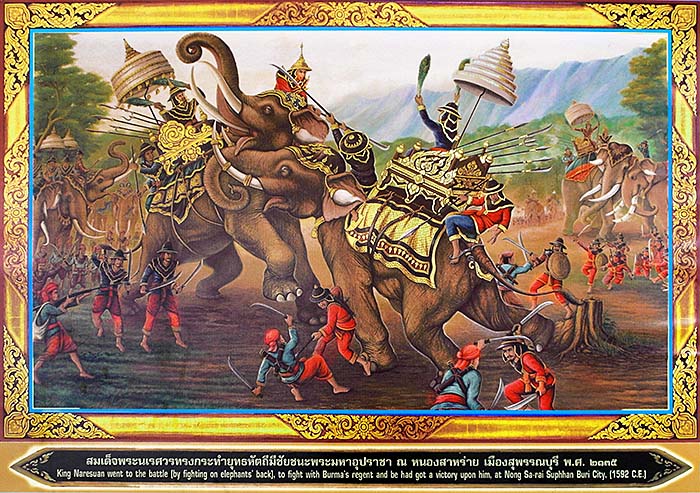
King Naresuan's elephant's fight against Burmese prince Minchit Sra in a battle, depicted in a painting seen in Wat Ratchaburana. Image by Asienreisender, 2013
